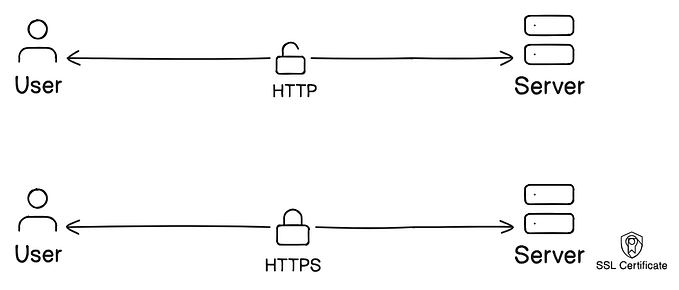Router Protocol Integrates with xERC20 Token Standard
In the blockchain space, achieving seamless interoperability and ensuring security are ongoing challenges, particularly for tokens bridged across different networks. To address these issues, Router Protocol has integrated with the xERC20 token standard. This move aims to simplify the token transfer process across chains while addressing security and liquidity concerns associated with bridged tokens.
Exploring the xERC20 Token Standard
The xERC20 token standard is an extension of the familiar ERC-20 token standard, designed to improve the security and ease of transferring tokens across multiple blockchain networks. It introduces a system where tokens can be minted and burned by approved bridges, either canonical or third-party.
Canonical bridges or native bridges use lock and minting to transfer canonical assets between chains without increasing trust assumptions, relying on the same validation methods as the chain itself, such as the Optimism Bridge. On the other hand, third-party bridges also use lock and minting for transferring representative assets between chains but add a security trade-off because users must trust the bridge to redeem the representative asset for a canonical asset in the future, similar to Wormhole.
This design lets token issuers set specific security preferences for each bridge, including rate limits, to manage the minting process effectively.
One of the key features of xERC20 is its approach to ensuring token fungibility. Allowing only whitelisted bridges to mint a uniform version of a token guarantees that these tokens are interchangeable across chains, removing the need for different, non-fungible representations of the same asset.
Imagine you’ve got a special kind of digital coin you can use in every blockchain “neighborhood” you visit. The trick behind this magic coin, called xERC20, is making sure that no matter where you use it, it stays the same — simple, right? But here’s the smart part: only certain trusted gatekeepers/bridges can make or take these coins away. This makes sure that your coin is always accepted.
So, you don’t have to worry about your coin turning into something else or not being accepted because it’s from somewhere else. It’s always just a coin, your universal key, keeping everything straightforward and fair!
Moreover, along with a simplified token transfer process, it eliminates the need for bridges to maintain their liquidity pools, as users will always receive the same “official” token version, regardless of the bridge used.
With xERC20 Standard users will get the same token — no matter which bridge mints it. Whereas, when the interchain token is minted by a particular bridge, it leads to many different versions of the same token.
Empowering the Issuers
Router Protocol’s choice to integrate with the xERC20 token standard reflects its commitment to improving cross-chain token interoperability and providing token issuers with greater control over their assets. This integration facilitates a more streamlined process for moving tokens across chains, enabling issuers to use Router Chain as a bridging medium for their xERC20 tokens.
Prioritizing Token Issuer Control
The integration aligns with Router Protocol’s principle of offering token issuers autonomy over their assets. By adopting the xERC20 standard, issuers can maintain control over their token deployments on each blockchain, with the flexibility to adjust their involvement with Router or other bridges as needed–ensures that token issuers can manage the minting of their tokens, enhancing security and trust in the process.
Furthermore, the emphasis on issuer speaks volumes in the context of avoiding vendor lock-ins — a scenario where users become overly dependent on a single provider’s technologies and services. Vendor lock-ins are notoriously detrimental because they limit flexibility and innovation, often leading to increased costs, reduced efficiency, and a lack of control over technological evolution.
This level of issuer control aligns with the decentralized principles, ensuring that the power to make critical decisions is distributed rather than centralized. It helps prevent the concentration of power and promotes a more equitable and resilient blockchain ecosystem.
The Significance of Canonical Minting
This integration’s facilitation of the shift towards canonical minting represents a significant improvement in how tokens are managed across different networks.
For example, USDC is a stablecoin that is pegged to the US dollar and is primarily issued on the Ethereum blockchain. However, to facilitate its use across different blockchains, various wrapped or bridged versions of USDC have been created, including USDbC on Base, USDC.e on Avalanche, etc. Circle team has been spending time issuing canonical versions of USDC on all these chains which is now becoming the preferred choice of USDC because those USDC coins enjoy Circle’s support and are easily transferable using Circle’s CCTP protocol.
Hence, rather than dealing with multiple versions of a token issued by different bridges, the xERC20 standard allows for creating a single, “official” version, thereby eliminating the need for multiple bridged or wrapped versions. Efforts along similar
The integration also overcomes the issue of token issuers getting locked in by canonical bridges. Before this development, choosing a canonical bridge for a token was a significant commitment. Token issuers were essentially marrying the infrastructure, protocols, and security measures of the chosen bridge.
Changing to a different bridge or protocol in the future could require significant technical, operational, and community coordination efforts. This lock-in effect made the chosen canonical bridge the de facto standard and influenced user experience, including aspects like security, liquidity, and transaction fees. However, with this integration, if a token issuer decides to switch to a different bridge or protocol due to better features or security, the migration process is a piece of cake–not leaving the issuers on the whims of the chosen bridge.
Internal Testing of the Integration
To show how this integration really works, we deployed a sample xERC20 token, locked it on Avalanche and minted it on Polygon -
This whole process of bridging happened via Router Chain.
Source transaction: https://explorer.testnet.routerchain.dev/crosschain/details?srcChainId=43113&eventNonce=20625
Destination transaction: https://mumbai.polygonscan.com/tx/0xa30485febeb65473cd2032f4ac2aea415cbe58935dba3892de3d11a7ba5bcbe0
In summary, the collaboration between Router Protocol and the xERC20 token standard marks a step forward in addressing the challenges of cross-chain token transfers. By enabling more secure and efficient token movements across different blockchains, this integration helps to streamline the process for token issuers and users alike. As the blockchain ecosystem continues to evolve, such advancements in interoperability and security are critical for fostering growth and innovation. xERC20 integration by Router shows how the interoperability universe is collaborative.
We invite you to stay connected with us for further updates and join our community across our various social platforms.
Website | Router Nitro | Twitter | Telegram | Discord | Instagram | LinkedIn | CMC Community | WhatsApp






